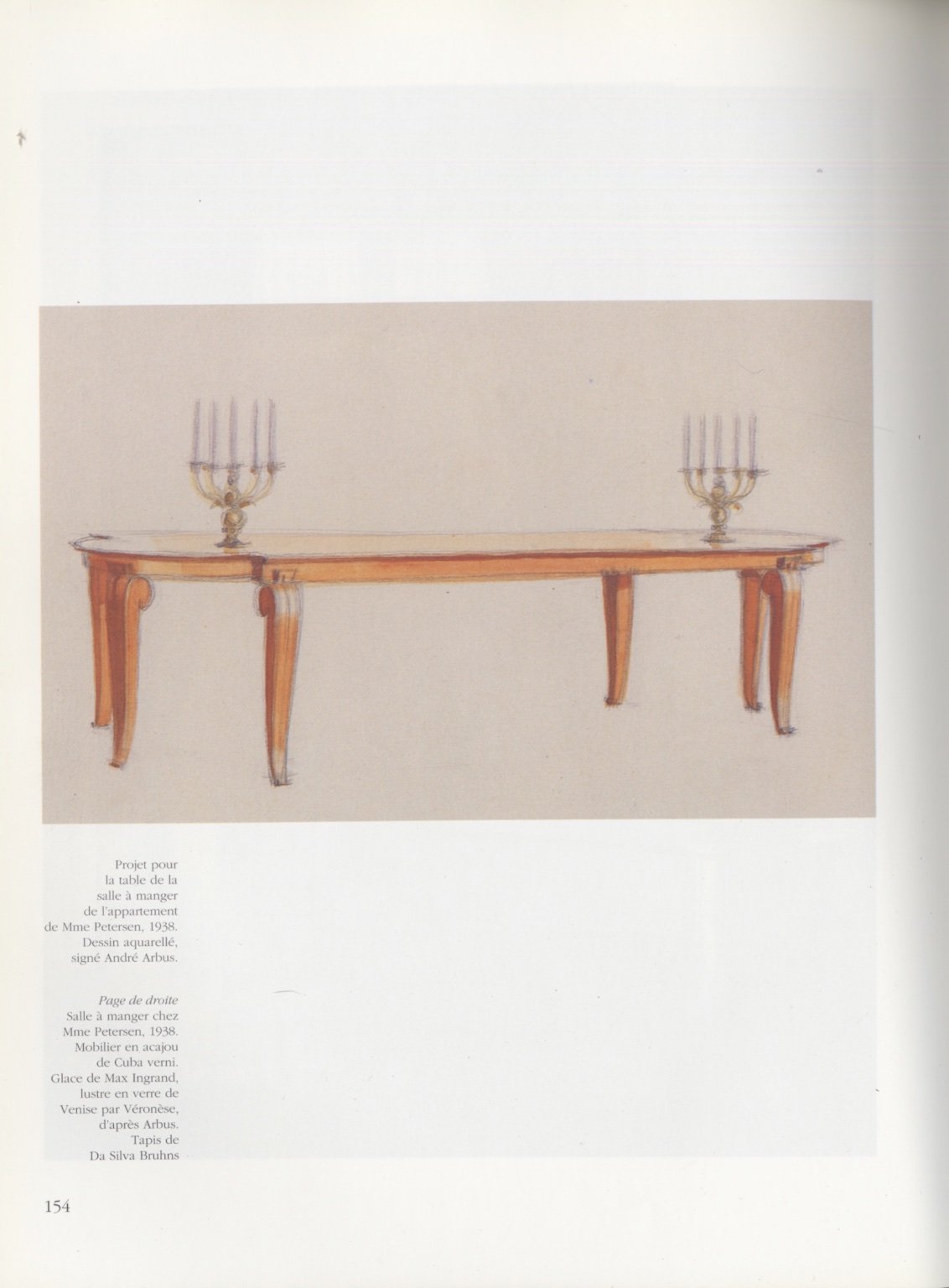 Image 1 of 12
Image 1 of 12

 Image 2 of 12
Image 2 of 12

 Image 3 of 12
Image 3 of 12

 Image 4 of 12
Image 4 of 12

 Image 5 of 12
Image 5 of 12

 Image 6 of 12
Image 6 of 12

 Image 7 of 12
Image 7 of 12

 Image 8 of 12
Image 8 of 12

 Image 9 of 12
Image 9 of 12

 Image 10 of 12
Image 10 of 12

 Image 11 of 12
Image 11 of 12

 Image 12 of 12
Image 12 of 12













Andre Arbus dining table (#1514)
French Art Deco dining table by Andre Arbus, circa 1938, in mahogany. This signed and documented model is featured in the book, Andre Arbus, by Yvonne Brunhammer (1996). A variant is presented in the October 1938 issue of Mobilier et Decoration in the residence of Mme. Peterson. 97” long x 37” wide x 28.5” high. Includes pull-outs on the ends which accept leaves and extend the table to a rectangular form measuring 115” long x 37” wide. The table is unrestored in the photographs. Signed on underside with branded signature, Andre Arbus
NOTE: set of eight matching dining chairs (in cherry) available, Calderwood Gallery #1170.
Andre Arbus
(1903-1969)
French Art Deco Architect and Designer, ANDRE ARBUS, WAS born in Toulouse, France. A third-generation cabinetmaker, Arbus became active in the Salons of the Societe des Artistes Decorateurs and the Salon d’Automne in Paris in 1925 at the young age of 22. His work included commissions for the 1922 oceanliner Bretagne, the 1927 La Provence and Ile-de-France as well as the 1961 France. He often used rare and exotic materials in his refined designs. These were elegant and pure and often gave the appearance of fragility – as in his neo-classical presentation at the Paris International Exposition of 1937. He compared the joints in his furniture to the joints of the human hand. His commissions also included private townhouses as well as Le Mobilier National for which designed a desk for U.S. Ambassador W. H. Harriman, and the post World War II Medici Room of the Chateau de Rambouillet.
French Art Deco dining table by Andre Arbus, circa 1938, in mahogany. This signed and documented model is featured in the book, Andre Arbus, by Yvonne Brunhammer (1996). A variant is presented in the October 1938 issue of Mobilier et Decoration in the residence of Mme. Peterson. 97” long x 37” wide x 28.5” high. Includes pull-outs on the ends which accept leaves and extend the table to a rectangular form measuring 115” long x 37” wide. The table is unrestored in the photographs. Signed on underside with branded signature, Andre Arbus
NOTE: set of eight matching dining chairs (in cherry) available, Calderwood Gallery #1170.
Andre Arbus
(1903-1969)
French Art Deco Architect and Designer, ANDRE ARBUS, WAS born in Toulouse, France. A third-generation cabinetmaker, Arbus became active in the Salons of the Societe des Artistes Decorateurs and the Salon d’Automne in Paris in 1925 at the young age of 22. His work included commissions for the 1922 oceanliner Bretagne, the 1927 La Provence and Ile-de-France as well as the 1961 France. He often used rare and exotic materials in his refined designs. These were elegant and pure and often gave the appearance of fragility – as in his neo-classical presentation at the Paris International Exposition of 1937. He compared the joints in his furniture to the joints of the human hand. His commissions also included private townhouses as well as Le Mobilier National for which designed a desk for U.S. Ambassador W. H. Harriman, and the post World War II Medici Room of the Chateau de Rambouillet.
